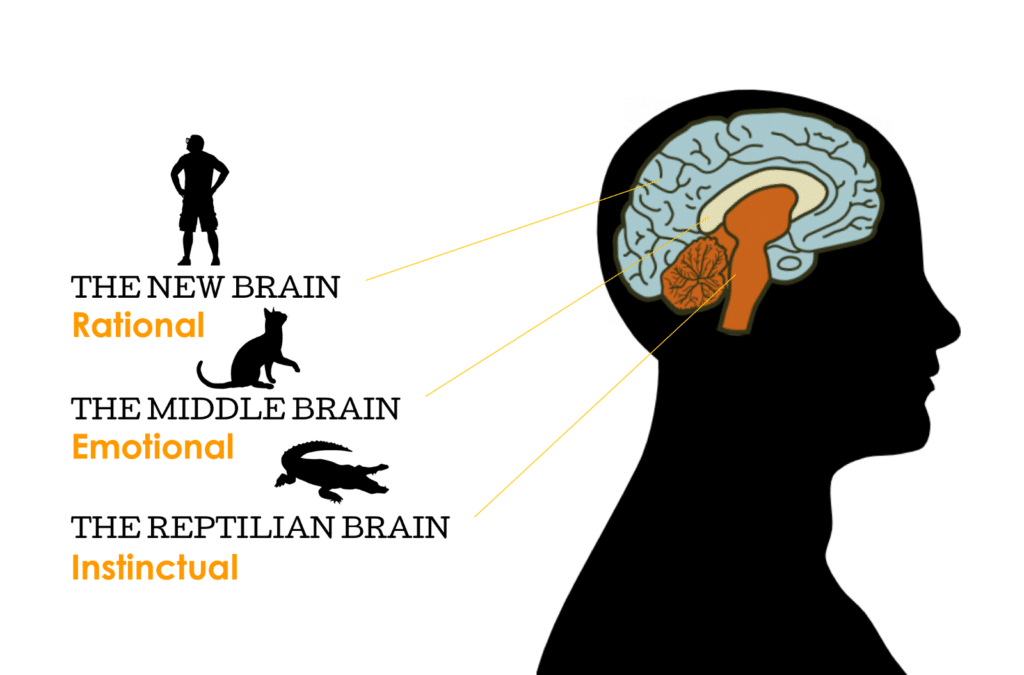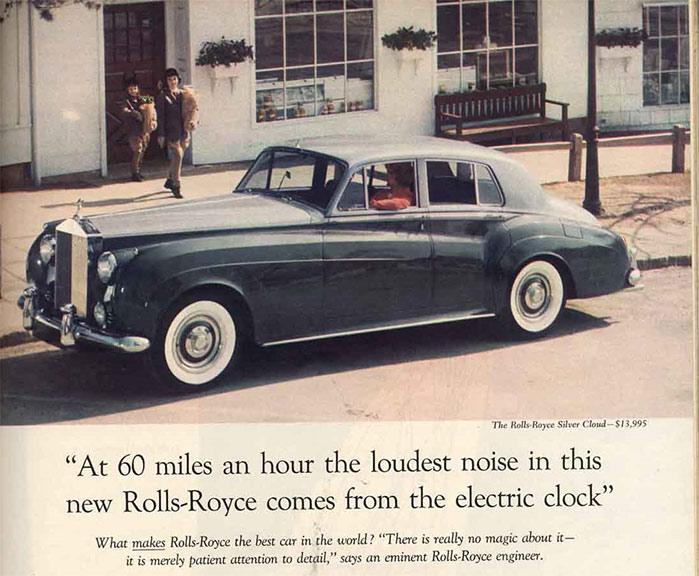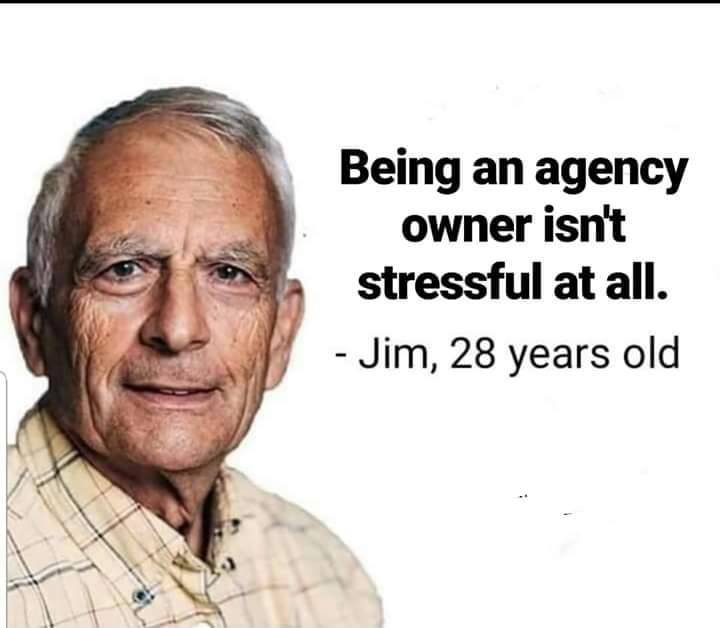This industry is clogged with equipment. Pictures of planes. Pictures of plane parts. Pictures of avionics parts.
It’s… garbage.
What we find very amusing is this – even the companies who can afford to shoot their own photography, their photography is just as awful as all the stock photography. It’s all pictures of equipment and if you’re lucky, some trite posed pictures of people.
It’s… garbage.
This industry’s strongest allure, it’s greatest selling point, and it’s enduring quality, is not the equipment. It’s how people feel when flying and doing what they want.
That’s why when we talk about this industry, we say this: “the freedom that flight enables.”
How we feel is what is important, not the equipment, not the hardware. Feelings.
To show feelings, you need to show faces. We’re programmed to find faces. We’re programmed to react to faces.
We like faces.
Let me show you.
If you understand this idea – you’ll be able to sell products. We buy emotion. We don’t buy thoughts or rationalization.
A Face in the Crowd
What do you see?

An inanimate object? Or a face?

Dashboard of 1963 Chrysler 300? Or a face?

This one to me looks like a duck face with a papal hat.

I always feel like, somebody’s watchin meeee…

Hands up!
And my favorite one:

I have the best garbage. Many people say I have the best garbage. Everbody says so. All the bad garbage gone, the bad garbage, it’s all gone. I have the best garbage. You’re actually going to get tired of the garbage, that’s how good our garbage will be.
Seeing faces in inanimate objects is common, and it has a name: pareidolia. It’s a psychological phenomenon that causes the human brain to lend significance—and facial features, in particular—to random patterns.
A Floridian woman named Diane Duyser made pareidolia famous when she bit into a piece of toast whose burnt patina, she claimed, was a dead ringer for the Virgin Mary. Ten years later, in 2004, she auctioned the stale, symbolically loaded bread for $28,000. Others have perceived an eerie visage in the mountainscapes of Mars, or Mother Teresa in a cinnamon bun. The list goes on—and naturally, it extends to art.
Why do we see faces? Because our brains evolved to “not die” too fast. Our evolution hinged on a couple of key things, two of which are to determine danger from others (thus we scan faces to determine intent), and to determine threats from the environment (which is why our eyes are so programmed to determine velocity and motion.)
We are programmed to react to faces. As a matter of fact, when a person doesn’t react to facial expressions, that’s condition is called emotional agnosia, and it occurs when there is damage to the amygdala portion of the brain.
A face is the singular most important image you can use to attract the attention of a person.
And not to be sexist, people will look at faces FIRST over other parts of the anatomy. While it’s true that men (and women) do ogle breasts and other parts of human anatomy, what’s not focused on in those studies is the ORDER which those people look at things, and faces are always first (although not always the longest).
It’s our programming. We need to know if you’re friend or foe, happy or sad, relaxed or mad. Our survival once depended on it.
Faces matter.
The Man with three brains
I studied economics when I was in college, and I studied political science (at the doctorate level completing all but my thesis), in graduate school. What we learn in studying how people make decisions, whether it’s to buy something, get married, or go to war, is that we are “human calculators” attempting to calculate probability, figure out outcomes, and choose one we think is the “right” one based on what we want, and then move to make that decision reality.
It’s all absolutely nonsense.
I’m going to let you in on a secret all good ad men know – there is no such thing as rationality. We are not “Bayesian Calculators” updating probabilities and seeking “Pareto efficient” outcomes. We’re just not. We’re spastic blubbering goo with a quantum computer trying to make sense of our world with about as much logical programming as Windows 98 kluged to a 386 computer.
Yeah. Scary huh?
But what about strategery and whatnot! You say. What about that awesome movie about John Nash?
Was he wrong? No. His observations and the mathematics are brilliant. But his logic of what causes the “stable equilibrium” is wrong. (The movie’s not half bad. Would have never thought a movie about game theory would ever get made in Hollywood.)
But what is lost in all this “rationality” discussion is – all that comes AFTER the decision, not before. Rationality, calculation, optimization, all comes after the emotive decision is made.
The decision, not to be crude about it, was a sexual instinct. All Nash did was come up with specific justification for how to “get laid,” he didn’t actually change the underlying decisions.
I’d also point out, as someone who studied game theory extensively, that the “Nash” solution rarely occurs in reality. Complex cooperation and rational judgment is something that is more along the lines of a miracle than the norm. That’s because we’re deeply locked in path dependent channels that make the decisions we believe to be possible limited.
For example, why do we have “the weekend?”
I’m sure you’re saying “Because that’s how it is. That’s how it always has been done. Because, I donno!”
You don’t have a good explanation – because you haven’t been asked to rationalize why Saturday and Sunday are the weekend.
This is something I’ve been thinking about ever since I saw this video:
Grey makes perfect sense here. We need little breaks (I’m a big believer in periodization) not one long stretch and then two meaningless days. Since I’m an entrepreneur, and since I can change my schedule, maybe it makes sense to do it.
Does it? Or is my emotional brain going, “hmmm – Weekend Wednesday.”
But why we make these decisions is never rational, even when they appear to be rational. Consider this story:
One day after school a young girl noticed that her mom was cutting off the ends of a pot roast before putting it in the oven to cook for dinner. She had seen her mom do this many times before but had never asked her why. So this time she asked and her mom replied, “I don’t know why I cut the ends off, but it’s what my mom always did. Why don’t you ask your Grandma?” The mom may have said this because she didn’t think she had the time to think about it. Which is always a mistake. We always have time to think. We just think we don’t.
So the young girl called her grandmother on the phone and said, “Grandma why do you cut the ends off the pot roast before cooking it?” Her grandmother replied, “I don’t know. That’s just the way my mom always cooked it. Why don’t you ask her?”
Undeterred, the girl called her great grandmother, who was living in a nursing home and asked her the same question. “Why did you cut the ends off the pot roast before cooking it? (I’m sure she said hello great grandma, how are you, before asking her the question. Being smart is not the same as being rude. In fact, the smartest people are often the kindest and most compassionate.)
And her great grandmother did not reply, “I cut off the ends of the pot roast because that’s what my mother did.” And she did not say because it makes the meat juicier. She said, “When I was first married we had a very small oven, and the pot roast didn’t fit in the oven unless I cut the ends off.”
This is the rationality of our logic.
We rationalize decision after they are made. Two researchers who have broken through the nonsense of “we’re just all bean counters,” are Daniel Kahneman and Amos Tversky. What we’re finally acknowledging in psychology (and in theories surrounding why commerce happens) is that utility, rationality, and prices are tenuous constructs at best. In the end, its how we feel about things that guides most of our decisions.
So we’re not governed by “logic” we’re governed by internal programming (heuristics) we don’t always understand.
That said, there are parts of our programming common to everyone. Why? Because we essentially have “three brains”

Our brains are like super computers running with IBM Basic with software updates kluged on to our minds.
Our reptilian brain came first. Eat. Have sex. Try not to get killed. Find things that feel good.
I realize that may be flippant – but that is literally the core of our programming. We are hedonistic pleasure seeking sex monsters who seek largely food, fornication, and not dying. Everything else is kluged on top of that. The middle brain developed our emotions. It’s largely where we started to have the beginning of language, but language is actually a higher cognitive function. It’s in part why when that pretty girl or gorgeous guy goes by, you stop talking and your jaw hits the ground. That’s the middle brain being short-circuited by lust with the reptilian brain having a complete core meltdown.
On top of all that quivering mass of irrationality lies the neocortex or the “new brain.” It’s like we took the super computer from Star Trek and fused it to a 1964 CDC 6600.
Honestly, it’s amazing we work at all when you think about this. We have a highly evolved quantum computer that can contemplate multiple states of the world at once, but God forbid our kid sticks a grilled cheese sandwich in the VHS – we complete lose our nut and become incoherent. That’s the crazy constructed nature of our psyches.
If you have ever been so mad you can’t even talk and crazy word salad comes out – reptilian brain.
If you’ve ever been so emotional you can’t talk – middle brain.
I have done a fair amount of original research on this over the years. The reptilian brain plays way more of a role in things (especially in purchasing) than we give it credit. I wrote a piece for a friend of mine, Jeff Bullas, about why we click on all that social media click bait garbage. The simple answer is – it’s the reptilian brain.
In my research, I gave readers a hierarchy of what is compelling in attention. Unsurprisingly, faces are the top of the list. Here’s what I wrote in my piece:
What the brain focuses on is what is MOST compelling.
The following things are unavoidably visually compelling to humans:
- Faces
- Movement
- Depictions of Emotion (Fear, Greed, Lust, Anger, and betrayal are the most intense)
- Sex
- Confusion (Oscar spends time trying to figure out if you are in danger)
- Difference (when things change, Oscar gets concerned)
Notice what’s not on the list: pictures of airplanes, pictures of instruments, pictures of nuts and bolts, pictures of people wandering onto planes and you can’t see their faces, pictures of planes majestically wandering around the clouds, pictures of planes on the ground.
Am I making my point to you yet? Do you get the picture?
PEOPLE. That’s what needs to go into your web content, your print ads, and your collateral. People feeling. People emoting.
Feelings sell your product. Aristotle, in his classic book. “Rhetoric,” said that a speaker who is attempting to move people to thought or action must concern himself with pathos, e.g. their emotions. If he touches only their minds, he is unlikely to move them to action or to change of mind, the motivations of which lie deep in the realm of the passions.
Or as Ogilvy famously pointed out: “When Aeschines spoke, they said, ‘How well he speaks.’ But when Demosthenes spoke, they said, ‘Let us march against Philip.’”
Signal Emotion not Features
If I am attempting to sell air travel – what’s more compelling. This?

Or… this?

If you are honest with yourself about what you actually looked at – I know you saw the woman first. Faces. Smile. Connection. That is how you draw people in.
I don’t care what you sell. Yes, it may be some APU part, but what you do enables something where someone feels good.
How do I know this? Because ALL OF COMMERCE IS BASED ON HEDONISM.
While Mad Men got a ton of things wrong about advertising and commerce, it got one thing correct. Advertising is based on happiness.
We sell products based on emotional attachment.
And even for the biggest companies in this business, they shouldn’t just lay back. The leaders in this market do that. It’s shocking to me.
It’s about emotion. Emotion is never over. Emotion is never satisfied.
The reason why the game never ends, is our quest for hedonism, our quest for “happiness,” our quest to satisfy the reptilian brain, is never ever over.
We buy things, even as businesses, to feel good.
That’s it.
And nobody feels good looking at a wing part, an APU unit, or things that go beep. That’s how this industry wants to sell stuff – engineering porn.
People don’t react to that. They just don’t. That’s why the majority of the advertising in this field is just God awful garbage.
Start by asking yourself what you want people to feel.
Now, some of the best ads in the world for engineered products do not feature people. There’s one in particular that comes to my mind:

It’s a brilliant ad that yes, doesn’t show people or faces prominently.
But there is indeed a feeling. Ogilvy was a brilliant copywriter. They don’t say “we make the best car in the world because…”
At 60 miles an hour, the loudest noise in the new Rolls-Royce comes from the electric clock. Think about how that makes you feel. How your brain imagines a serene environment with the studding of the “click” of the clock as it moves. How would that environment make you feel?
Feelings. We buy based on how it makes us feel.
The easiest way to engender feelings is to show faces and people. Ogilvy was a brilliant copywriter, and if you have similar skill you might indeed make your copy sing even without brilliant imagery.
But for the rest of us, showing a face, instead of equipment, showing a feeling, instead of a feature, is how you sell products.
Be genuine
A caveat in your search now for pictures. We have looked at photography for this industry quite a bit lately. While in general this is a “lie we tell ourselves” in stock photography, the lies we tell ourselves in the imagery for this field are pretty gigantic. As my creative director started looking at images, we were struck by how silly they were. For example, how many times have you seen an image like this?

So Troy, our Creative Director, says to me, “Is that what private aviation really is? It seems really lonely if it is. Who drinks champagne by themselves? It’s always pictures of these guys alone on a plane looking out the window or on their laptop and some champagne or something. Who the hell really does that?”
Well, the answer of course is, nobody. We drink champagne (traditionally) to celebrate something. The big win. The big day. An event. Most men typically don’t go, “I’ve had a hard day at work, let me go crack open a magnum of champagne and wind down.”
So the images aren’t genuine, which is why many in this industry don’t like the photography. We realize this is very difficult in stock photography, since all the images are always posed and trite. But again, the funny thing we’ve noticed is, even “the big boys” wind up shooting images that look exactly like these shots. Planes flying aloft alone. The lonely businessman getting served by the flight attendant in the impossible pencil skirt.
It’s all constructed nonsense. You can use, however, stock photography in funny and engaging ways. To make fun of our own industry (and something I find humorous as an agency head), consider this:

A photograph that I found that I thought could be good for a charter ad was this one:

With perhaps copy of “Tired of meeting new and interesting people at the Security Checkpoint? Perhaps you should consider private.”
We did this print layout for a prospective campaign where we used faces and equipment trying to convey simultaneously the charter experience. It’s a prototype ad, not a finished concept, but it’s still better than anything I see in this space:

Another idea was to show the benefit in an unusual way. This photograph lends itself in an interesting way:

My thought on this photo was something to the effect of “if you need three days to recover after your 18 hour flight, maybe you should consider flying private.”
Another thing of course is to use interesting people. My mentor (and friend), George Lois did amazing print ads for Braniff back in the day. Andy Warhol and Sonny Liston – opposites siting next to each other in first class.

We show faces to show emotion
I know most of you who are reading this – it will fall on deaf ears. You’re terrified at the idea of not showing the thing you make. You’re terrified of not showing what’s for sale.
Look, sometimes you need to show what’s for sale. You couldn’t make a catalog of people smiling and carrying on and stuff. That would be nuts. People are ready to buy, they are in the process of making the purchase, yes you need to show them it goes beep, it’s green, the rest.
Nearly all of you want to lead with that nonsense. That’s why the advertising in this field is largely ineffective. It’s why most of you tell me “well we ran a print ad, it didn’t do anything.”
Yeah. Because we haven’t seen anyone who knows what they’re doing actually make a print ad in this space. I have not seen a single ad from anyone in this field that I was like “oh that’s a good ad.”
And I don’t say that out of arrogance – we like other people’s work all the time. When we see good stuff, we save it. We study it. I’ve shown you tons of good images and stuff done by others and we’ll continue to use good work by others.
When you have a high consumer intent, in other words, “I’m ready to buy, help me figure out which one,” then showing your products and services in detail makes perfect sense.
But it is not the lead.
Jet manufacturers should have way more pictures of people exploring the world and living their ideal lives, than pictures of aircraft at 41K feet. When they have the brochure for the specs and the options – then of course – they should have the best pictures of the product possible.
Try and show more emotion. Try and elicit more emotion. The easiest way to do that is to show people. People and faces.

